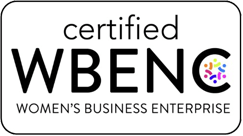Building a solid content plan is the first step any biotech company should take when looking to develop an impactful marketing strategy. The aim of good content is to answer your audience’s questions, while also explaining, teaching, and communicating your brand’s messaging in the best way possible.
So, we know that having a content marketing strategy is important for biotech companies. But how do you develop one? And more importantly, what’s the difference between a successful content marketing campaign for scientists, and one that fails to reach desired results?
If you are part of the healthcare industry, content marketing is a great way to attract more people towards your brand, and improve your overall sales. By focusing on client experience and not just your product, you’ll allow customers to feel closer to your brand and more eager to interact with you.
In order to do that, you need to develop a hybrid content approach that combines traditional and digital marketing strategies and tactics, instead of focusing solely on in-person touch points, or online social media platforms.
To help you build a winning biotech marketing action plan, we’ve put together a list of five action points that will make your content better than your competitors and take your visibility to the next level.

1. Biotech Marketing and Product Positioning
The way you position your products can improve your content marketing greatly and bring your business ahead of your competitors.
But how do you do that in such a competitive field like biotechnology?
By having your customers in mind, and by addressing what they want, not what you think they need.
Unfortunately nowadays, many brands and businesses in the medical space don’t understand this new wave of change, and are not prepared to address the needs and wants of their customers.
By reframing the market, you can position your product relative to your competition and modernize your business approach, so that you authentically meet the needs of your audience.
2. Non-Branded Educational Programming
When marketing to scientists, you need to move beyond statements and promotional programs. Building awareness and educating patients is the primary role of unbranded content, but it’s also a way for companies to get around the strict life science regulations and have more freedom in how they engage with consumers.
Biotech marketing can’t be boiled down to just a few core messages, case studies or some promotional campaigns. With the unprecedented shift to digital and your audience’s thirst for science research and technical knowledge, non-branded educational content strategies are needed to drive customer engagement and retention.
A positive user experience, allows customers to access the information they want, when they want it, and in a way that they’d like to receive it. Of course, this approach presumes that information is designed to be user centric and not product-centric.

3. Omnichannel Marketing
In the biotech space, and many other industries for that matter, COVID-19 has been the catalyst for a swift transition from a multi-channel to an omnichannel marketing mindset.
Omnichannel doesn’t just mean using different channels. It’s an integrated ecosystem that provides access across all initiatives and regions. When marketing to scientists, everyone has their own specific definition of what omnichannel marketing is, but some of the shared principles are as follows:
- Targeted audience segmentation
- The use of brand personas
- Complex customer journeys
- Campaign personalization
- Customized content by segment
- Sales training
- Brand ambassadors
- B2B marketing
4. Data Democratization
Democratization means that everybody has access to data (marketing communications, product marketers, digital teams or different regional teams). But how do you plan your biotech marketing strategy so that users don’t get lost in the overload of information?
Also, how do you make sure that there are no restrictions at the gateways to data access?
By establishing a Data Center of Excellence based on the following metrics:
- Keep it simple, and focus on the data that really matters when it comes to business growth
- Use interactive e-books and visuals throughout the pages on your website to ensure that insights are easily drawn from the data quickly
- Apply SEO tactics to optimize campaigns and content
5. Measuring Success By Engagement and Net Promoter Scores
Customer satisfaction has long been the primary measure of a company’s reputation and success. By moving away from typical KPIs, taking the time to understand what customers want, and using net promoter scores, companies can get a better know-how and a deeper understanding of how customers feel about them.
Measuring, tracking, analyzing, and reporting the performance and effectiveness of any biotech content marketing plan can be simplified if you know what variables to look at. Here are a few to get you started:
- Track conversions and conversion rates
- Adapt to the evolving CMI goals
- Create a continuous education process through biotech webinars and scientific animated videos
- Collect actionable metrics, like time on page, bounce rate, and which page they exit on.
Conclusion
Armed with the powerful strategies we outlined above, you should have no problem maximizing the effectiveness and the ROI of your next biotech marketing campaign.
If you need any help or have questions about marketing to scientists including biotech branding and product launches or how to build brand equity, don’t hesitate to get in touch.




